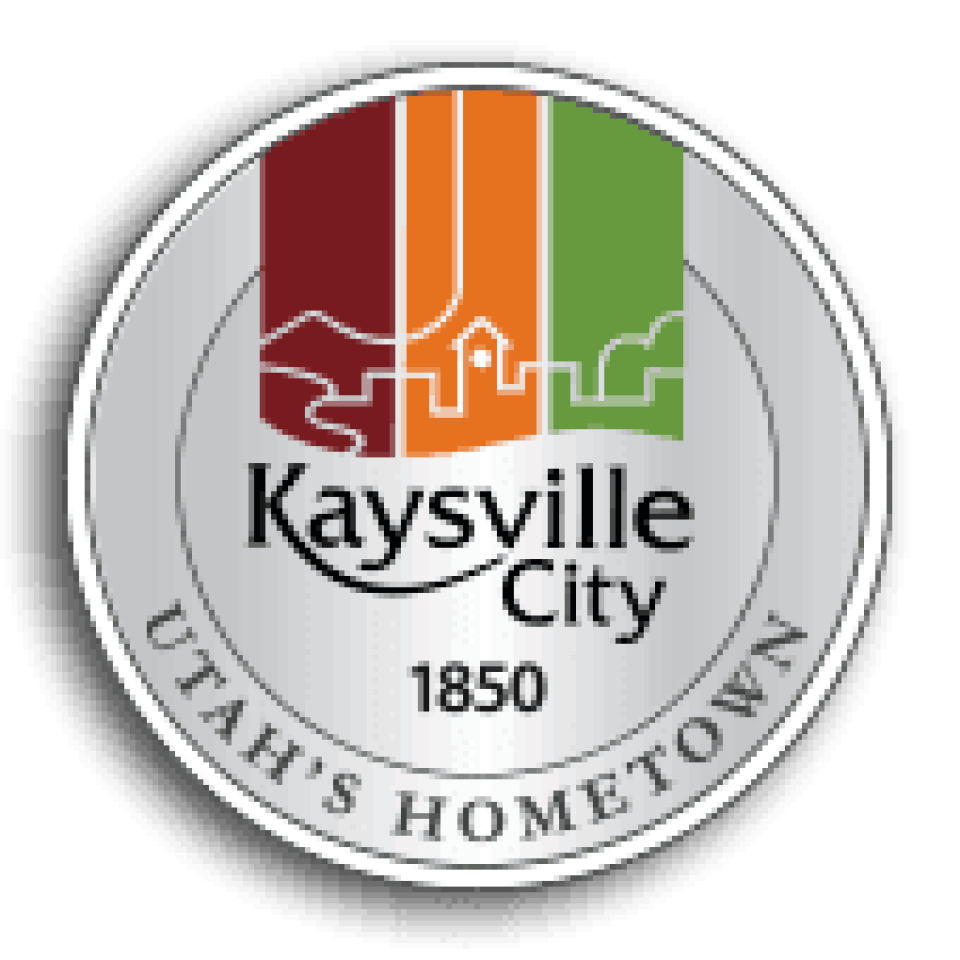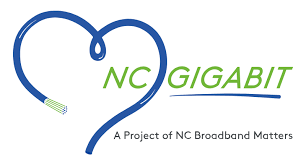
Fast, affordable Internet access for all.

With so much attention on how the Broadband Equity, Access, and Deployment (BEAD) Act is continuing to unfold (including from us), it’s important to remember that the FCC’s Rural Digital Opportunity Fund (RDOF) is still in the process of authorizing bids from its $9.2 billion auction conducted in December of 2020. This is for two reasons: first, because areas for which winning bids are authorized will have a much harder time going after BEAD funding. And second, because after the auction closed there was an array of bids by a variety of Internet Service Providers (ISPs) which looked problematic to us - either because they were for technologies that don’t represent equitable, pragmatic solutions in the long run, or because they were won by ISPs ill-prepared to scale to the level they would need to to fulfill obligations.
New Resource: RDOF Tracker
The Rural Digital Opportunity Fund was designed to bridge the digital divide in rural America by incenting deployment to households lacking access to basic broadband speeds, defined as 25/3 Megabits per second (Mbps). Phase I was operated as a reverse auction over many rounds in December of 2020, with ISPs bidding on locations throughout the country. The lowest bids won, and committed those providers to completing new connections to those addresses using RDOF support spread out over ten years.
Today we’re releasing a new resource we hope will be helpful in keeping tabs on which providers have gotten money, how much has been authorized, and in which states. The dashboard below is built on the Tableau platform, and shows the real-time results according to the latest authorization spreadsheets released by the FCC.
Calloway County (pop. 39,000) in western Kentucky is known for the picturesque shorelines circling Kentucky Lake, the wildlife at Land Between The Lakes National Recreation Area, and as the home of Murray State University where Ja Morant dazzled basketball fans before becoming an NBA phenom.
Now there's a different team coming to town that will delight local residents: a new partnership between Calloway County and West Kentucky and Tennessee (WK&T) Telecommunications Cooperative will soon make this rural corner of the state known as a home for high-speed Internet connectivity, as the county and WK&T recently announced they were joining forces to expand the cooperative’s existing fiber network to reach every unserved and underserved location in the county.
Calloway County and WK&T are each committing a $6.2 million matching contribution for the first phase of the expansion project, which will see the co-op’s fiber-to-the-home network in the region extended 236 miles to serve an additional 4,274 homes and businesses.
After years of struggling to obtain reliable Internet connectivity, The Hoh Tribe in western Washington has entered a beta trial with SpaceX’s StarLink satellite Internet service, drastically improving the community's Internet access speed and capacity.
Russ Elliot, Director of the newly formed State Broadband Office, had been working closely with Melvinjohn Ashue, the former Vice-Chairmen of the Hoh Tribe. Russ has a background running an Internet Service Provider (ISP) and is skilled at networking with technology companies to tap into resources and opportunities to help connect reservations, rural communities, and others.
Notably, Washington state emergency responders had also begun using StarLink in areas decimated by wildfires and since, StarLink has had a positive working relationship with people within the Washington state government. When Starlink’s beta began, Russ caught wind and introduced Starlink’s people to the Hoh tribe, and they shared their ongoing difficulties. Starlink was eager to help and excited that the Hoh tribe reservation was well positioned in relation to the satellites Starlink had in orbit at the time.

A Plug and Play Broadband Solution
The setup was relatively fast, taking about a month in all, and logistically not complicated. Starlink held virtual meetings with the Hoh tribe council explaining the technology, setup, and service. The company also sent representatives to the Hoh reservation to test out the product on site, and after the tribe council discussed the service with community members 18 of 23 homes signed up and the satellite receiver kits were sent out shortly after.
As voters went to the polls to cast ballots in the 2020 Presidential election, in two major metropolitan areas residents overwhelmingly approved ballot questions to move forward on exploring how to expand broadband access in their respective cities.
In Chicago, nearly 90% of those who cast ballots said “yes” to a non-binding referendum question that asked: “Should the city of Chicago act to ensure that all the city's community areas have access to broadband Internet?" With 2,034 of 2,069 precincts counted, 772,235 voters out of 862,140 cast their ballots in favor of that question.
That vote came on the heels of the roll out of “Chicago Connected,” a new initiative to bring high-speed Internet service to 100,000 households that do not have reliable access within the nation’s third-largest school district.
Meanwhile, in Denver 219,435 voters, or 83.5% of the city’s electorate, cast ballots in favor of question 2H, which allows the city to opt out of the state’s 2005 state law referred to as SB 152. That law prevents municipalities from building or partnering for broadband networks. Approval of the ballot initiative also grants the city “the authority but not [the] obligation to provide high-speed Internet access." Two other Colorado communities – Berthoud and Englewood – also voted in favor of similar ballot questions, asking voters if they want to opt out of SB 152. In Berthoud, 77.3% of voters cast ballots in support of the question. In Englewood, the opt-out question passed with 79.4% of voters in favor, which will allow the city to provide Wi-Fi service in city facilities.
This week Christopher brings together Doug Dawson (Owner and President, CCG Consulting), Monica Webb (Head of Marketing Development and Strategic Partnerships, Ting) and returning guest Travis Carter (CEO, US Internet).
The group first discusses Low-Earth Orbit satellite Internet access in the context of SpaceX’s Starlink public beta launch, and what it means for connecting unserved Americans in both urban and rural areas. Then, they dig into the future of cable as a wireline broadband technology, with frank talk about its longevity in the face of fiber as the industry begins talking about the penetration of DOCSIS 3.1 and future moves to DOCSIS 4.0. Finally, Christopher, Doug, Monica, and Travis spend time tackling the question of why we don’t see more small, private Internet Service Providers (ISPs) doing fiber projects in urban areas. They debate, for instance, Right-of-Way issues and the problem of access to capital.
Subscribe to the show using this feed.
Email us broadband@muninetworks.org with feedback and ideas for the show.
In the fall of 2019, when the Kaysville City Council was poised to move forward on a $26 million, 30-year bond to build a municipal-owned fiber optic network, the COVID-19 pandemic had not yet turned life upside down.
Although city officials and advisors had spent 18 months thoroughly exploring options in a planning process City Councilwoman Michelle Barber called “one of the most vetted and open projects that we’ve worked on,” a group known as the Coalition for Responsible Kaysville Fiber created enough pushback to convince the City Council to shelve the plan and defer to a citizen-led ballot initiative.
On Tuesday, Nov. 3, Kaysville voters, in this city of approximately 32,000, will not only cast their ballots in the Presidential election, they will also be asked if they want the city to move forward with Kaysville Fiber. If the ballot initiative passes, it will allow the city to deploy a Fiber-To-The-Home (FTTH) network.

Currently, Comcast and CenturyLink are the Internet Service Providers (ISP) for most of Kaysville with some areas near the city relying on satellite Internet access. As has been the case in hundreds of communities across the nation that have built out fiber networks, Kaysville city leaders are looking to build a “last mile” fiber network to lower prices and improve services by creating an environment for increased competition.
Proponents are hoping the new “normal” in the face of the on-going pandemic — with the massive rise in virtual classrooms, remote work from home, telemedicine, and online commerce — will help voters see Kaysville Fiber as necessary infrastructure.
At the end of August, Alabama rolled out what has been a unique state-level response to the ongoing Covid-19 pandemic and a decision by every school district to offer remote learning as an option for the current school year. Using $103 million in CARES Act funding, the governor’s office enacted the Broadband Connectivity for Students initiative to help low-income families pay for existing or connect new service via a voucher program that runs through December 31st of this year and is worth, on average, about $400 per family.
To date almost 60,000 vouchers have been redeemed representing more than 100,000 students, and while we would wish to see such a large pot of funds go instead towards permanent connectivity solutions, for thousands of families it’s meant immediate and necessary relief. It also highlights the ongoing importance of fast, reliable, affordable Internet-access for distance learning.
The process began in late July, with the state issuing a Request for Proposals (RFP) [pdf] soliciting responses as many Internet Service Providers (ISPs) as wanted to participate in the program. The Alabama Department of Economic and Community Affairs is heading it up, with the state's Department of Education providing the identifying information for households with students on free or reduced lunch. CTC Technology and Energy is serving as contractor (and receiving approximately $3.4 million for its design work and services).
37 Internet Service Providers (ISPs) across fiber, fixed wireless, mobile, cable, and satellite service ultimately made the cut to participate in the program. See the full list of ISPs, but it includes a handful of municipal networks and cooperatives we’ve covered in the past, including:

For the ninth episode of our special podcast series “Why NC Broadband Matters,” Christopher talks with Doug Dawson, President of CCG Consulting. Doug is a veteran advisor to small public and private telecommunications carriers and an experienced, thoughtful voice in the broadband space. During their discussion, Christopher and Doug give the various levels of government across the United States a report card for their connectivity efforts during the pandemic, and talk about how the coronavirus has brought into focus the two digital divides facing our communities today. They consider what the broadband gap looks like between rural and urban areas, and the problem of adoption versus access for North Carolina communities facing obstacles to high quality Internet access.
Christopher and Doug also talk about whether SpaceX or other satellite providers are a solution to North Carolina’s rural broadband challenge, which leads them to reflect on the problem of the FCC’s current minimum broadband speed definition as a baseline for disbursing funds to providers connecting communities over the next ten years.

We produced this episode and the “Why NC Broadband Matters” series in partnership with NC Broadband Matters, a nonprofit organization advocating for better connectivity across North Carolina.
This show is 37 minutes long and can be played on this page or via Apple Podcasts or the tool of your choice using this feed, at the Community Broadband Bits page, or at the NC Broadband Matters page. We encourage you to check out other "Why NC Broadband Matters" content at the podcast feed so you don't miss future bonus content that may not appear in the Community Broadband Bits Podcast feed.
Transcript below.
We want your feedback and suggestions for the show-please e-mail us or leave a comment below.
Listen to other episodes here or view all episodes in our index. See other podcasts from the Institute for Local Self-Reliance here.
Thanks to Shane Ivers for the Music: What's The Angle? by Shane Ivers - https://www.silvermansound.com a Creative Commons Attribution (4.0) license.
As schools and businesses ask people to stay home to reduce the spread of Covid-19 coronavirus, I wanted to share some thoughts about how I expect broadband Internet access networks will handle the change and increase in broadband traffic in residential areas.
Our first reaction is that, as with so many areas with network effects, the rich will get richer. This is to say that historic inequities will be exacerbated — people that have been able to afford the high-quality networks will probably see very little disruption and those who have older networks may be effectively disconnected.
Better Network Scenarios
Those on fiber optic networks probably won't notice major changes in demand. This is the easy one — it is why we have long believed that fiber optics should be the goal for the vast majority of Americans.
Most modern cable networks should be also able to handle the demand — especially on the download end. This is good because 2 out of 3 Americans with broadband gets it from a cable network. Upgrades in recent years from the aggressive cable companies (Comcast Xfinity, Cox, and some of the many smaller cable networks — Charter Spectrum less so) should allow more than sufficient download capacity even if home video streaming increases significantly. But in smaller towns, where the local cable companies haven't been able to afford those upgrades and the bigger cable providers have just ignored them, I would expect to see intermittent and in some cases, persistent congestion problems from bottlenecks.
In the upstream direction, the cable networks will have some challenges. I wouldn't expect most Comcast or Cox markets to have too many problems, though neighborhoods with lots of professionals using video conferencing tools could congest. I would expect Charter Spectrum, Mediacom, and many of the others to have frequent congestion for upstream connections, lowering throughput extremely at times.
The federal government is about to spend more than $120 million on subsidies that, rather than improving rural connectivity, will make tens of thousands of families worse off.
These funds are part of a 2018 federal program intended to expand rural broadband access called the Connect America Fund phase II (CAF II) reverse auction. The program, in which Internet access providers competed for subsidies, will distribute nearly $1.5 billion over the next 10 years to connect unserved rural residents. But in some communities, the auction may do more to widen the digital divide than diminish it.
While some winning bidders committed to building out high-speed fiber optic networks, satellite company Viasat will rake in more than $120 million in subsidies to continue providing inadequate geostationary satellite connectivity to rural households that are clamoring for something better. Not only does satellite Internet access offer slower speeds, greater latency, and less reliability for a higher cost compared to other technologies, but Viasat’s subsidies are making those areas ineligible for future broadband funds, deterring other providers from building truly high-quality networks. Instead of bridging the digital divide, the process will relegate certain communities to satellite Internet access while others receive ultra-fast fiber and do nothing more than deepen the fissure.
Mo’ Money . . .
The Connect America Fund (CAF) is a multi-phase subsidy program that supports improved connectivity in rural, high-cost areas as part of the Federal Communications Commission's (FCC’s) Universal Service Fund. The most recent phase of the program, the CAF phase II reverse auction, auctioned off regions to providers using a complicated formula that prioritized bids for low subsidy amounts and high-quality service.
Previous rounds of CAF mainly subsidized the large incumbents, such as AT&T and CenturyLink, but for the reverse auction, the FCC opened participation to other entities, including non-traditional providers like electric cooperatives. Eligible areas included rural locations where the incumbents had previously refused subsidies (and the accompanying commitment to expand Internet access).